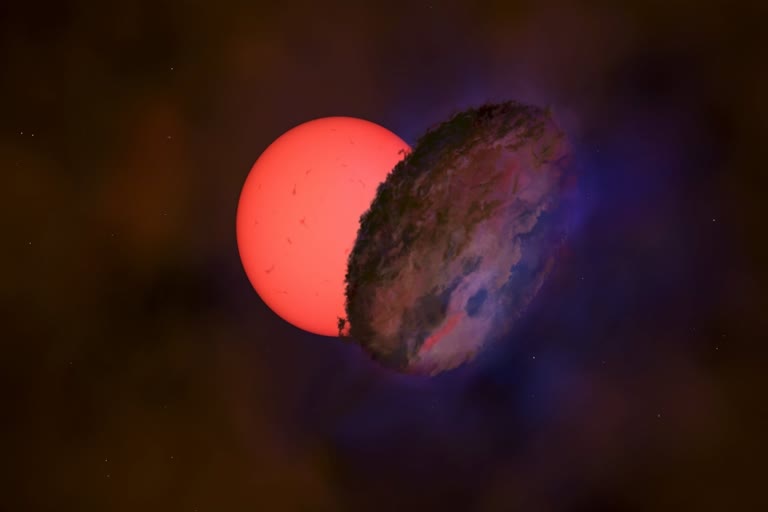London: An international team of astronomers has spotted a giant 'blinking' star towards the centre of the Milky Way, more than 25,000 light-years away.
The star, VVV-WIT-08, decreased in brightness by a factor of 30, so that it nearly disappeared from the sky. While many stars change in brightness because they pulsate or are eclipsed by another star in a binary system, it is exceptionally rare for a star to become fainter over a period of several months and then brighten again, the team said.
The researchers believe that VVV-WIT-08 may belong to a new class of "blinking giant" binary star system, where a giant star 100 times larger than the Sun is eclipsed once every few decades by an as-yet-unseen orbital companion.
The companion, which may be another star or a planet, is surrounded by an opaque disc, which covers the giant star, causing it to disappear and reappear in the sky. The study is published in Monthly Notices of the Royal Astronomical Society.
"It's amazing that we just observed a dark, large and elongated object pass between us and the distant star and we can only speculate what its origin is," said Sergey Koposov from the University of Edinburgh.
Since the star is located in a dense region of the Milky Way, the researchers considered whether some unknown dark object could have simply drifted in front of the giant star by chance. However, simulations showed that there would have to be an implausibly large number of dark bodies floating around the galaxy for this scenario to be likely.
One other star system of this sort has been known for a long time. The giant star Epsilon Aurigae is partly eclipsed by a huge disc of dust every 27 years but only dims by about 50 percent. A second example, TYC 2505-672-1, was found a few years ago and holds the current record for the eclipsing binary star system with the longest orbital period -- 69 years -- a record for which VVV-WIT-08 is currently a contender.
The UK-based team has also found two more of these peculiar giant stars in addition to VVV-WIT-08, suggesting that these may be a new class of "blinking giant" stars for astronomers to investigate.
There now appear to be around half a dozen potential is known to star systems of this type, containing giant stars and large opaque discs.
Also Read: Gionee launches 3 new smartwatches in India
(Inputs from IANS)



